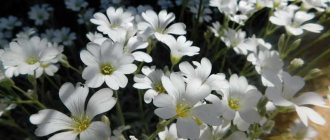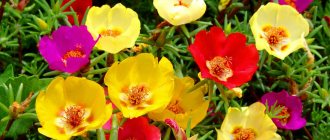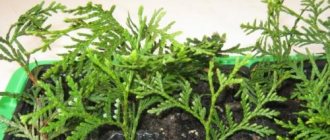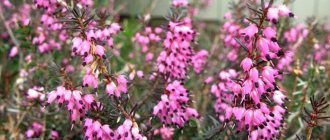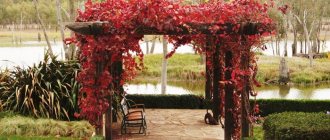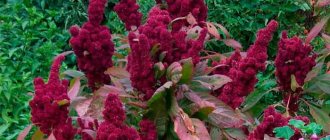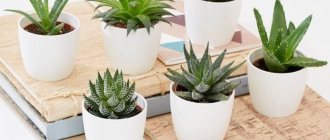Plant species
There are a total of 19 plant species belonging to the Araucariaceae family. For the most part these are tall trees with flat needles. Some species are considered decorative; they are bred to decorate streets in the Caucasus and Crimea.
Araucaria araucana (Chilean) (see photo) Grows in Argentina and Chile. The trunk reaches 60 m in height, with a girth of 1.5 m. The cones are edible and very tasty. The lower branches may lie on the surface of the soil and disappear with age.
Araucaria angustifolia (narrow-leaved) (see photo) Grows in the mountains of Brazil, so is sometimes known as Brazilian. In nature it reaches a height of 50m, at home – up to 3m. The leaves have a bright green tint. Wood of this type is widely used in industry.
You can grow these species at home.
Araucaria bidwillii (Bidwill) (see photo) Grows in eastern Australia. In natural conditions it grows up to 50m in height. The leaves are glossy, spiny.
Araucaria heterophylla (variegated) (see photo) Grows on Norfolk Island. It can reach a height of 60m. The branches grow perpendicular to the trunk, the leaves are needle-shaped and tetrahedral.
Araucaria species
Cook's Araucaria (Araucaria columnaris)
In nature, the species is found on Pine Island and in the tropical part of the southern New Hebrides. Short branches collected in whorls grow from the trunk at an angle of almost 90 degrees. The crown, as a rule, expands at the apex. The length of the cones is about 10 centimeters; in appearance they look bristly, because they have an awl-shaped appendage drawn downwards. The needles are soft, the narrowing of the upper part of the crown is very smooth. This species is most often cultivated in subtropical and tropical countries.
Araucaria heterophylla
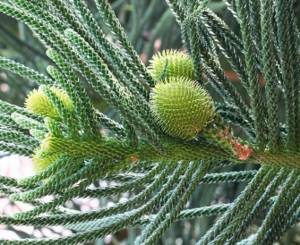
The plant is native to Norfolk Island, where it can reach a height of about 60 meters. The peeling bark is light brown in color. Due to the fact that the branches grow perpendicular to the trunk, the shape of the crown is pyramidal. The tetrahedral needle-shaped leaves are arranged on the branches in a spiral; they reach a length of about 20 mm and bend slightly upward. Inexperienced gardeners often confuse this species with tall araucaria (Araucaria excelsa).
Araucaria angustifolia
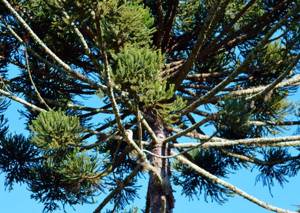
Or Brazilian araucaria (Araucaria brasiliana). The species grows naturally in the south of Brazil in its mountainous part. In nature, the height of a tree can reach 50 meters, and at home - no more than three meters. On hanging thin branches linear-lanceolate leaf plates of a rich green color grow, reaching a length of up to 50 mm. The wood of such araucaria is widely used in construction and in the furniture industry, and it is also used for the manufacture of musical instruments and paper.
Chilean Araucaria (Araucaria araucana)

This plant can be found in nature in the western part of Argentina, and also in Chile. The height of the trunk can reach 60 meters, and its diameter can reach one and a half meters. The thick, resinous bark is covered with longitudinally arranged cracks. As a rule, the lower branches lie on the surface of the soil and over time they die off. The lateral branches are collected in whorls of 6–7 pieces. In middle-aged plants, such branches grow perpendicular to the trunk, while in old trees they hang down slightly. The spiny and hard dark green leaf plates on the branches are arranged spirally and very tightly. Healthy and very tasty seeds can be eaten. Wood is widely used in construction.
Indoor spruce How to grow araucaria
Choosing the right place
sunlight for normal development, but direct rays are not at all beneficial. Therefore, it is better to keep the plant on a western or eastern window. For uniform growth and development, the tree needs to be turned to the light, first on one side, then on the other after about 5-7 days.
In summer , the araucaria plant can be kept outside, being sure to protect it from the sun and precipitation. At home, the flow of fresh air is ensured by frequent ventilation of the room.
Araucaria does not like transplants
The homemade Christmas tree doesn’t really like housewarming parties. Therefore, even young araucarias are not replanted every year. You should start replanting when the plant has outgrown its pot and roots become visible from the drainage holes. And this happens about once every 4 years. It is necessary to replant on the eve of the growth period - in the spring, or, in extreme cases, in early summer.
When choosing a new pot, pay attention to the size: it should be only 2-3 cm wider than the old one, stable. Both plastic and ceramic containers are suitable for araucaria. But give preference to ceramics, it is heavier and takes away harmful salts from the soil. And araucaria is very sensitive to them.
In order for the Christmas tree to grow well and not get sick, it needs porous and slightly acidic soil. You can plant it in ready-made universal soil from the store, adding a little peat. Or mix the substrate according to one of the recipes:
- two parts each of leaf and peat soil, plus one part each of turf soil and sand;
- equal parts clay, turf and leaf soil and half sand;
- in equal parts deciduous, turf and coniferous soil, humus, peat and sand.
During transplantation, the most important thing is not to damage the roots of the araucaria and not to break the delicate branches. Both are very difficult to restore.
Sequence of plant transplantation:
- We water the araucaria about an hour before transplanting.
- Let's prepare a pot, disinfect the soil and drainage and begin replanting.
- We place a drainage layer on the bottom of the pot, and a soil substrate on top.
- Carefully remove the plant from the old pot and inspect the roots. We remove the rotten ones.
- We install the araucaria in a new pot, straighten the roots.
- Carefully fill the space between the earthen lump and the walls of the pot, shaking it.
- We compact the soil with our fingers, being careful not to damage the roots.
- We water the araucaria and spray its crown. Humid air will help the Christmas tree adapt faster.
- For about a week, and if necessary longer, we keep the transplanted araucaria in partial shade. Then we put it in a permanent place and take care of it as usual.
Even a slightly larger pot will make the Christmas tree grow. But your araucaria is already a large tree, and you don't want it to get even bigger? Then don't replant it. And it is enough to renew the soil only from the top. Remove a few centimeters of old soil and fill in new soil.
Temperature
Heat is contraindicated for Araucaria ! In summer, the temperature should not exceed +20 degrees; in winter, +10+15 degrees will be optimal.
Did you know that the bamboo houseplant can grow without soil? Read about the intricacies of care in this article.
Many people ask about the features of transplanting Zamioculcas flowers; here you will find useful answers to this question.
All about Christmas trees in containers
1. Grown in containers.
2. Transplanted into a container a few weeks before the New Year.
The first type of Christmas tree can be safely planted in open ground; it will take root perfectly and will delight you for many years. We can say that this is not only the purchase of a Christmas tree for the New Year, but also a contribution to the landscape design of your summer cottage or yard.

Serbian live Christmas trees in containers
But with the second type everything is a little more complicated. As a rule, stores sell Christmas trees in relatively small containers, 10-15 liters for a Christmas tree 1-1.5 meters high. However, in open ground, the tree’s root system forms more freely, and when transplanting into a container of this size, up to 70% of the roots have to be cut off! Such a tree can also be planted after the New Year, but it should be remembered that its survival rate will be about 10-15%, that is, it is more likely to die. Why do they make such Christmas trees in pots? This is in no way a deception of the buyer. It’s just that such trees last at home much longer than cut ones, with good care up to a month, while a regular cut Christmas tree will begin to crumble after 7-14 days, depending on the type. That is, in fact, this is a tree exclusively for the New Year holidays, but it costs much longer.
But with the second type everything is a little more complicated. As a rule, stores sell Christmas trees in relatively small containers, 10-15 liters for a Christmas tree 1-1.5 meters high. However, in open ground, the tree’s root system forms more freely, and when transplanting into a container of this size, up to 70% of the roots have to be cut off! Such a tree can also be planted after the New Year, but it should be remembered that its survival rate will be about 10-15%, that is, it is more likely to die. Why do they make such Christmas trees in pots? This is in no way a deception of the buyer. It’s just that such trees last at home much longer than cut ones, with good care up to a month, while a regular cut Christmas tree will begin to crumble after 7-14 days, depending on the type. That is, in fact, this is a tree exclusively for the New Year holidays, but it costs much longer.

Spruce Konika in a decorated container
But with the second type everything is a little more complicated. As a rule, stores sell Christmas trees in relatively small containers, 10-15 liters for a Christmas tree 1-1.5 meters high. However, in open ground, the tree’s root system forms more freely, and when transplanting into a container of this size, up to 70% of the roots have to be cut off! Such a tree can also be planted after the New Year, but it should be remembered that its survival rate will be about 10-15%, that is, it is more likely to die. Why do they make such Christmas trees in pots? This is in no way a deception of the buyer. It’s just that such trees last at home much longer than cut ones, with good care up to a month, while a regular cut Christmas tree will begin to crumble after 7-14 days, depending on the type. That is, in fact, this is a tree exclusively for the New Year holidays, but it costs much longer.
Watering
For irrigation, soft, settled water at room temperature is required. You can use rain water or boiled water. Watering should be regular; the soil should not be allowed to dry out or become waterlogged. In winter it is reduced, especially when the tree is kept in cool conditions.
If watering should be moderate, then the air humidity is maintained sufficiently high, otherwise the side branches will begin to dry out. To create optimal conditions, the tree is constantly sprayed, at least once a day, both in summer and winter.
Succinic acid and epin can be added to the water for spraying
In addition, the plant can be placed in a tray filled with pebbles or expanded clay, keeping them wet at all times. The soil in the pot can be covered with moss, constantly moistening it.
How to care for homemade Christmas trees in a pot?
1. All conifers need optimal cool temperature conditions. About 15 degrees. Quite problematic in an apartment with heating. In general, you need to place it closer to the balcony.
2. Timely watering is important. But overfilling is also dangerous. Water immediately after bringing it from the supermarket or garden center. Further, as the soil dries out. For araucaria, it is better to water with boiled water.
3. At home, all conifers need spraying. The air due to central heating is too dry.
4. If the conifer suddenly begins to turn yellow, it means there is not enough nutrition. He needs to be fed. It is better to use liquid fertilizer.
5. There is a misconception that junipers cannot tolerate bright sun. This is not at all for junipers in a container! In December, January, February, the sun cannot be harmful in an apartment. Just if you put the juniper in the shade, it will lose its decorative effect.
6. If you don’t like the shape of the purchased ephedra, then you can easily change it. Trimming. Any conifer can be trimmed. Don't be afraid to give it the look you want!
Transfer
The tree does not really like replanting , so it does not require annual transplants. The plant should be replanted if it has “grown” out of its pot. That is, no more than once every 2-3 years. At the bottom of the container, good drainage is made from expanded clay and pebbles to prevent water stagnation. Soil for araucaria is made from a mixture:
- sheet (1 part);
- turf (2 parts);
- peat (1 part);
- sand (2 parts).
Another option - in equal shares:
- deciduous land;
- coniferous;
- turf soil;
- peat;
- sand;
- humus.
The houseplant Araucaria can also be grown hydroponically.
Home care
Of course, it is difficult for a tropical guest to settle down in a separate apartment. But if you adhere to certain rules, everything should work out for you.
Location and lighting
The bright light of the araucaria is shown. But it is better to protect the plant from direct sunlight. It is advisable that the flowerpot be illuminated from both sides. If this is not possible, rotate it 90 degrees every week. Otherwise, you won’t get even growth of the branches.
In winter, the evergreen pet will have to be illuminated. Moreover, it is advisable to do this simultaneously from above and from the sides.
During the hot season, you can take the pot outside. Just choose the place carefully - partial shade, protected from rain.
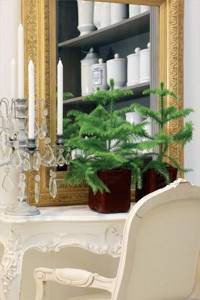
Temperature
Heat is contraindicated for a coniferous friend. In summer it should not be more than +20°C. In winter, it is optimal to lower the temperature to +6-10°C. In any case, it should not be higher than +15C. You can take your unusual Christmas tree to the insulated loggia.
Watering
Araucaria should be watered abundantly. The soil in the tub should be constantly moist. Just make sure that the moisture does not stagnate. Under no circumstances allow the earthen ball to dry out. Always water with settled water. In winter, when temperatures are low, the intervals between waterings should be increased.

Air humidity
Give your Norfolk pine a moist environment. You will have to spray the needles twice a day, and in winter, keep them away from the battery. The water for the procedure should be warmed to room temperature and allowed to stand for 24 hours.
The soil
Araucaria can be planted in soil for coniferous crops. Or you can make your own soil mixture by mixing:
- 35% sand;
- 15% peat;
- 15% rotted leaves;
- 35% turf.
In such proportions, the soil will be loose and breathable, as we need.

Feeding and fertilizers
The Pacific guest needs spring and summer feeding. At this time, you should add a weak solution of mineral fertilizers with a low calcium content twice a month. Take special ones for coniferous plants or complex ones. Once a month it is advisable to feed with mullein infusion. After transplanting, do not fertilize until the tree begins to grow. You should also not do this in autumn and winter.
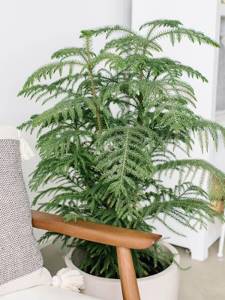
Transfer
Araucaria should not be replanted often, since tropical trees do not tolerate such a procedure well. Therefore, replant the tree for the first time when it has grown well. Do this no more than once every 3-4 years. Preferably in the spring.
Select a pot 3-4 cm larger than the previous one. Transfer the plant along with a lump of earth to a new place of residence, not forgetting to line the bottom of the pot with drainage. Be prepared that the Norfolk pine will get sick after transplanting. The lower branches may even dry out.
In between replantings, you can add soil from the forest to the flowerpot.

Trimming
Do not be afraid that the araucaria will reach too large a size. This only happens in living nature. And in the room it will stretch no more than one and a half meters. You can cut off the top only if you need to stop growth. In this case, the tree will stop growing and it can be taken from cuttings. If you want to grow a large, beautiful plant, you don’t need to prune it at all.
Bloom
You should not wait for your conifer to bloom. At home, araucaria almost never blooms.
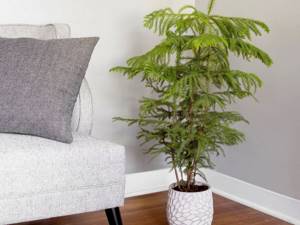
The need for tying
Over time, the tree overgrows with large branches, so to avoid drooping, tie the branches so that they tend upward. When they are stretched in the desired direction, you can remove the garter.
You can do it differently. Place a stack of books or old magazines under the branches to secure them in position. This method will only work with young branches, but it will not help old ones to rise to the top.

Reproduction
propagated by seeds and cuttings.
Seeds are planted immediately after collection because they are not intended for long-term storage. In addition to the soil described above, a mixture of peat, sand and crushed charcoal can be used for planting seeds.
the soil surface is moistened and covered with a small layer of moss, which is periodically removed for ventilation. Germination time is from 2 weeks to 2 months.
For propagation by cuttings, take the upper, half-lignified branches. They are cut in the spring below the whorl and placed in the shade for 24 hours. After the expiration of the period, the cut site is cleaned of the resinous substance and sprinkled with crushed charcoal.
Then you can treat it with a root formation stimulator. Now the cuttings are planted in separate containers with sand and covered with glass jars or plastic bottles. It is necessary to regularly ventilate and moisten the cuttings. The rooting process can take up to 5 months.
Caring for a Christmas tree in a pot
Before bringing a potted Christmas tree into the house, you need to leave it in a cool room for several days. Otherwise, due to a sharp change in temperature (falling from a cool environment to a warm one), the plant may begin to grow, deciding that spring has come.
If you think this is good, I have to disappoint you. Along with the tree, its roots grow and they become cramped in the pot, and this weakens the root system and the tree as a whole.
Selecting a location
Spruce loves cool and moist air, so the place must be appropriate: there should be no heaters or any thermal objects nearby.
The tree cannot be in a room with dry air, so ventilate and humidify the air more often. It is also important to remember that the plant should not be kept indoors for more than 2-3 weeks. In winter, the spruce is dormant, so it needs to be taken to a cool place.
Tip: Place a container of water in the room where the plant is located to provide humid air.
Required temperature
As was written earlier, you cannot keep the spruce in the room for a long time; it will do best on the balcony or in another cool place. In winter, the plant needs a temperature of +6 to +10°C, while negative temperatures can also be easily tolerated by the tree, but not by its roots.
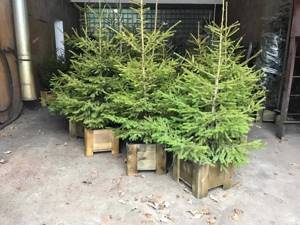
Therefore, if the temperature becomes negative, you need to wrap the pot with a thick blanket, scarf or other thing that retains heat. If you have straw or hay, you can use that too.
Advice: if you decide to take the plant to the garage, do not place it on concrete, otherwise the soil and roots will freeze. In summer, it is worth taking the spruce out into the fresh air, where it will be more comfortable, while avoiding direct light rays hitting the tree.
Watering and moistening
A Christmas tree in a pot loves moisture, so it should be watered every other day (or at least 3 times a week, use about 2-3 liters of water). But do not overwater the plant - it may die from waterlogging. If this amount of water is too much for your spruce, then you need to monitor the soil and water it when it dries out.
You also need to moisturize the needles; feel free to take a spray bottle and spray the needles at least 1-2 times a day.
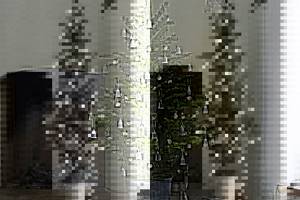
In winter, the spruce rests and is at rest, so watering should be reduced to once every 3 weeks, provided that the temperature is optimal (+6 - +10°C), if the temperature drops below 0°C, watering should be done once a month. (In summer you need to water every day)
Tip: place a spray bottle next to the tree, so you will spray the plant more often. It is better to use settled water.
Lighting
Spruce needs light; there is no need to place it in a completely unlit place. Diffused but bright light is best. Very young trees especially need proper lighting.
Therefore, you should not ignore the light factor if you want your pet to have green and lush needles. But avoid exposing the tree to sunlight, it will burn the needles.
Tip: for a uniform and uniform color of the needles, you can rotate the tree around its axis from time to time.
Fertilizers
During the active time of the Christmas tree, that is, from May to September inclusive, the plant needs to be watered with the addition of regular mineral fertilizers once or twice a month.
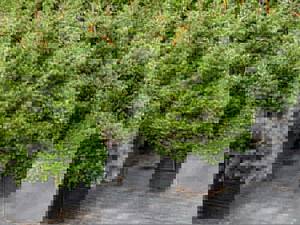
They can be bought at flower shops or other specialized stores. Spruce does not require any other additives; in this regard, it is not whimsical. In winter, during the dormant period (from November to March), there is no need to feed the tree with fertilizers, because it is resting and should not grow.
Tip: you can use onion peel tincture as a source of microelements.
Diseases and problems
The consequences of violating the rules of plant care lead to possible symptoms.
- The plant grows poorly when there is an excess of calcium. The tree must be replanted in suitable soil, watered with softened water, and the fertilizer changed.
- Very thin new branches - appear when there is a lack of nutrients. Increase the amount of fertilizing, change the soil.
- Curvature of the trunk - uneven lighting. Rotate the container with the plant 90 degrees every week.
- The shoots turn yellow and dry out due to insufficient air humidity. Increase the number of sprays, place the pot in a pan of water.
- The needles dry out and fall off - the reason may be either low air humidity or insufficient watering.
How to replant a decorative Christmas tree. Decorative spruce in a pot. Care and its features
On the eve of the New Year holidays, it's time to go for the symbol of the New Year. But what to do after buying a spruce? A description of the tree will help you learn the features of growing and caring for this plant.
Conifers grow quite slowly, so they can stay in a tub for several years. To do this, you need to properly maintain the spruce in the pot. How to care for such a plant is described below.
A spruce tree in a pot should be watered at least 3 times a week, the best option is every other day. To do this, use 2-3 liters of water. Carefully ensure that the soil in the pot does not dry out, which can happen if the air in the apartment is dry.
Remember that a decorative spruce tree in a pot cannot remain in a heated room for more than two weeks. Caring for it indoors is simple: regular watering and high humidity. After the New Year holidays, send the winter beauty to the balcony or other cool but well-lit place. A sudden change in temperature can harm the plant, so it must be hardened off first. To do this, leave the tree for several nights in a room where it is about 7 degrees below zero. To prevent the root system from freezing, insulate the pot. Use hay, straw and other materials.
To improve tree growth and condition, replant the plant every 2-3 years. Choose a pot that is a few centimeters wider than the previous one.
Spruce, like all plants, requires regular watering, which stops with the onset of real frost. In spring, it is recommended to fertilize the soil and feed the tree with complex mineral fertilizer, which is applied along with water.
